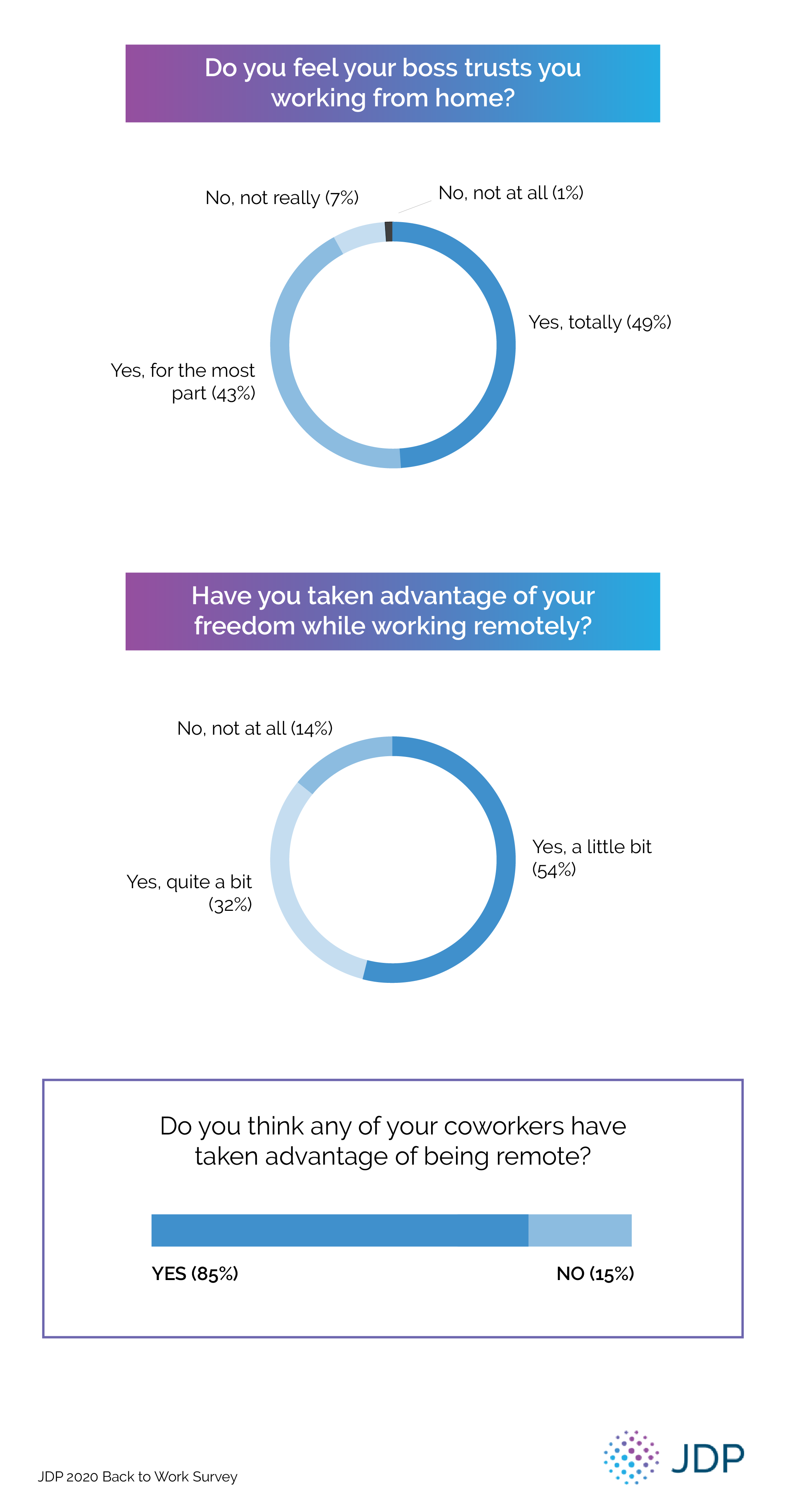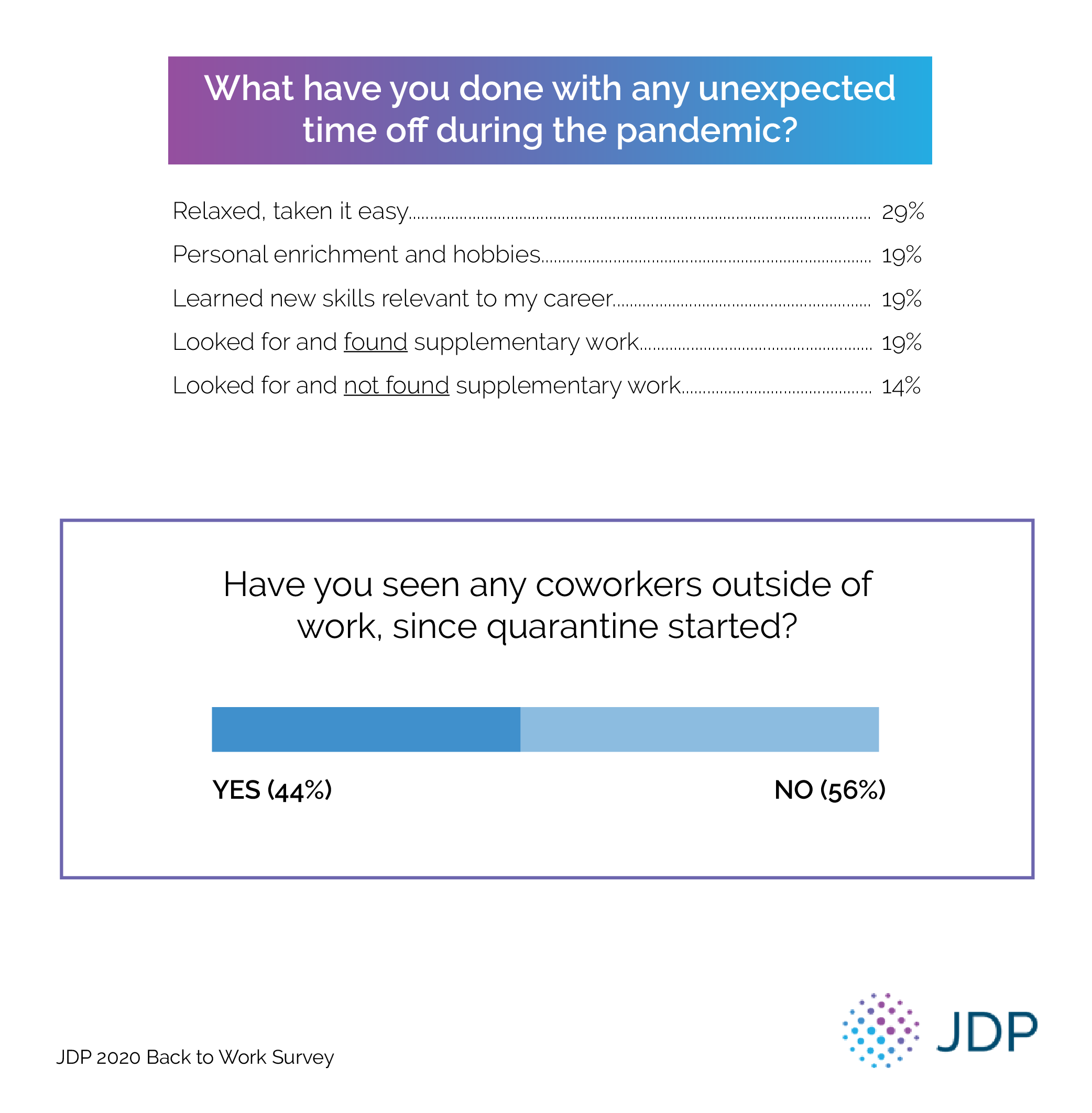At this point, working from home is no longer the strange new phenomenon that stirred up national attention a couple months ago. Now, for so many Americans, it’s routine. We’ve got our Zoom game tightened up, we’ve made peace with the others in our homes, we’ve scheduled that antibody test, and we’re getting stuff done.
There are many fascinating aspects of this pandemic-spurred era of remote work, and we’ve chosen to investigate a few. We recently surveyed more than 2,000 Americans who typically work in offices but have found themselves stranded at home, to learn when and how much they’re working, how productive they are, and whether they’ve taken advantage of their freedom.
To begin, we looked for trends in what work hours look like at home versus at the office.

In addition to trends in work hours and distractions, we wanted to explore the hot button issue of trust. Anecdotally, we understand that many employers are struggling to trust their employees when they’re out of the office. In our survey, we asked respondents to report on themselves.

Finally, we asked people who have been laid off or furloughed for any portion of the pandemic to share how they’ve spent the time. Nearly one in three have kicked back for some R&R, while another third of people looked for supplementary work and the remaining third learned new skills or pursued hobbies.

Methodology
Between June 12 – June 16, 2020, we polled 2,038 Americans who typically work in an office of some sort, but have been working remote because of the pandemic. Respondents were 49% female, 51% male and ranged in age from 22 to 66 years old.